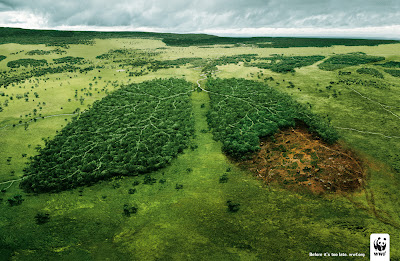According to the IPCC’s Fourth Assessment Report (2007) the share of the forestry sector (including deforestation) in overall global emissions in 2004 was 17.4%. This was higher than emissions from the entire transportation sector (13.1%) the same year. The forestry sector in 2004 was the third highest emitting sector after energy supply (25.9%) and industry (19.4%). The reason deforestation increases atmospheric greenhouse gas (GHG) concentrations is that the burning or decay of forests release the carbon stored in trees and the soil.
According to Schenider et al (2006), tropical deforestation can also influence the global tropics by enhancing El Niño / Southern Oscillation (ENSO) variability. Diagnostic experiments indicate that changes in land surface properties cause changes in the mean surface wind stress in the tropical Pacific, which destabilizes the ENSO system leading to increased variability.
While deforestation and forest degradation emit GHGs, through afforestation (new plantings), reforestation (replanting deforested areas) and sustainable management forests can play a significant role in climate change mitigation. Forests can act as carbon sinks by fixing carbon dioxide (CO2) from the atmosphere. Trees are generally 20% carbon by weight and organic matter in forest soils also store large amounts of carbon. According to the latest FAO/ITTO report, tropical rainforests store an estimated 652 gigatonnes (Gt) of carbon in their biomass, 42% of which is found in the three rainforest basins.
 |
| Tropical rainforest in Puerto Rico (source: Britannica online) |







